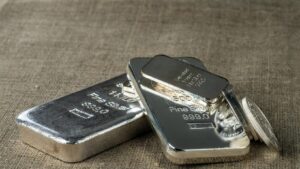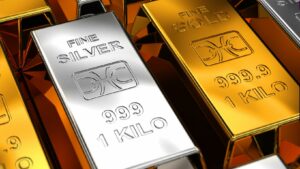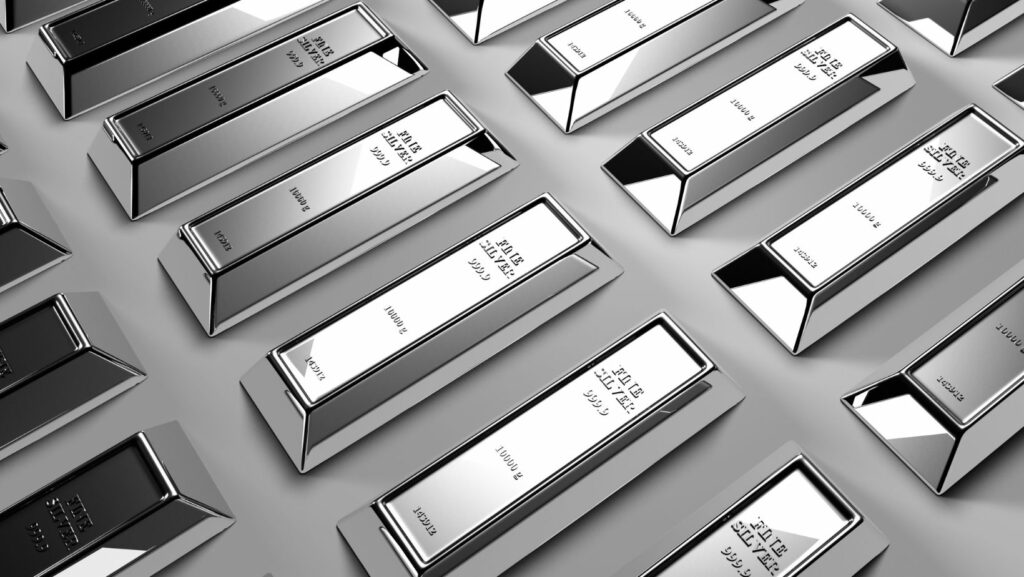In recent years, silver has often been spotlighted as a potential haven for investors seeking stability outside the stock market. However, delving deeper reveals that this shiny metal might not be the golden opportunity it appears to be. With its volatility and numerous market influences, silver can pose significant risks that often outweigh its potential benefits.
Why Silver Is a Bad Investment
The Popularity of Silver in Investment Circles
Silver attracts many investors due to its lower price compared to gold, making it seem like an affordable entry into the precious metals market. However, its appeal can often mask underlying issues. Historically, the metal has enjoyed moments of high demand, particularly when economies face uncertainty and investors look for tangible assets. Despite such peaks, silver’s intrinsic value remains shaky, influenced heavily by industrial demand which accounts for over half of its consumption.
Comparison to Other Precious Metals
 When evaluating silver’s performance against other precious metals, gold often serves as the primary benchmark. While both metals experience fluctuations, gold typically maintains its value better during economic downturns. For instance, during market crises, gold prices have risen, whereas silver has often failed to hold its ground. This is partly because gold benefits from consistent investment demand, whereas silver’s dual reliance on industrial usage and investment demand makes it more volatile. Silver also faces competition from other industrial metals like platinum and palladium, each having specific industrial uses that can drive their value independently of the financial markets. Thus, while silver might appear attractive during periods of economic stability, it does not offer the same security as gold, making it a less favorable choice for long-term investment.
When evaluating silver’s performance against other precious metals, gold often serves as the primary benchmark. While both metals experience fluctuations, gold typically maintains its value better during economic downturns. For instance, during market crises, gold prices have risen, whereas silver has often failed to hold its ground. This is partly because gold benefits from consistent investment demand, whereas silver’s dual reliance on industrial usage and investment demand makes it more volatile. Silver also faces competition from other industrial metals like platinum and palladium, each having specific industrial uses that can drive their value independently of the financial markets. Thus, while silver might appear attractive during periods of economic stability, it does not offer the same security as gold, making it a less favorable choice for long-term investment.
Volatility and Price Fluctuations in Silver Markets
Historical Price Instability of Silver
Silver markets exhibit significant price instability, a primary reason why silver is often considered a bad investment. Historically, silver prices have shown erratic patterns, marked by sudden spikes and dramatic falls. For instance, in April 2011, the price of silver reached a record high of nearly $49 per ounce but dramatically fell to around $34 per ounce in a matter of weeks. This level of unpredictability makes silver a risky choice for investors seeking stable returns. Analysts highlight that this volatility is partly due to the dual nature of silver as both an industrial metal and a precious investment commodity, causing its market value to fluctuate more than more stable investments like bonds or gold.
Factors Influencing Silver Price Volatility
 Several factors contribute to the high volatility of silver prices. Primary among these is the influence of industrial demand; silver’s extensive use in sectors like electronics, solar energy, and medical technologies means that any shift in these industries directly impacts its price. Additionally, economic indicators such as inflation rates, currency strength, and global economic stability also play crucial roles. An increase in industrial activity can drive up silver prices, whereas an economic downturn can reduce industrial demand, leading to lower prices. Furthermore, speculative trading in silver markets exaggerates price movements, making silver even less predictable as an investment option. These factors combined explain why silver’s volatility poses a solid argument against its investment potential, aligning with the narrative that silver may not be the best choice for those seeking financial security from their investments.
Several factors contribute to the high volatility of silver prices. Primary among these is the influence of industrial demand; silver’s extensive use in sectors like electronics, solar energy, and medical technologies means that any shift in these industries directly impacts its price. Additionally, economic indicators such as inflation rates, currency strength, and global economic stability also play crucial roles. An increase in industrial activity can drive up silver prices, whereas an economic downturn can reduce industrial demand, leading to lower prices. Furthermore, speculative trading in silver markets exaggerates price movements, making silver even less predictable as an investment option. These factors combined explain why silver’s volatility poses a solid argument against its investment potential, aligning with the narrative that silver may not be the best choice for those seeking financial security from their investments.
Lack of Yield and Income Generation
 Investing in silver generates no yield or income, making it less appealing than dividend-paying stocks or interest-bearing bonds. Unlike these financial products, silver lacks the mechanism to produce regular income or cash flows for its holders. This characteristic becomes a significant drawback for investors who rely on steady income streams to build wealth or fund expenses. Silver remains a stagnant asset unless its market price appreciates, compelling investors to bear opportunity costs by forgoing investments that can generate regular returns. This lack of yield contributes to the notion why silver is viewed as a less desirable investment.
Investing in silver generates no yield or income, making it less appealing than dividend-paying stocks or interest-bearing bonds. Unlike these financial products, silver lacks the mechanism to produce regular income or cash flows for its holders. This characteristic becomes a significant drawback for investors who rely on steady income streams to build wealth or fund expenses. Silver remains a stagnant asset unless its market price appreciates, compelling investors to bear opportunity costs by forgoing investments that can generate regular returns. This lack of yield contributes to the notion why silver is viewed as a less desirable investment.
Silver investments often fall prey to negative market sentiments and high levels of speculative influence. The metal’s prices can be highly volatile, fueled by speculation rather than intrinsic value or economic fundamentals. Traders and investors frequently use silver for short-term gains, leading to rapid price movements that deter long-term investors.



